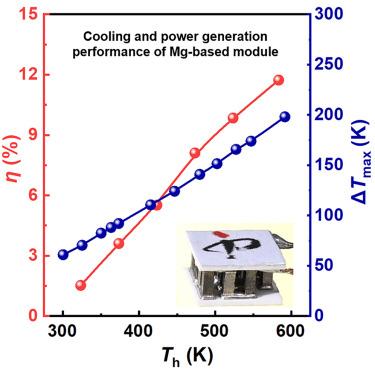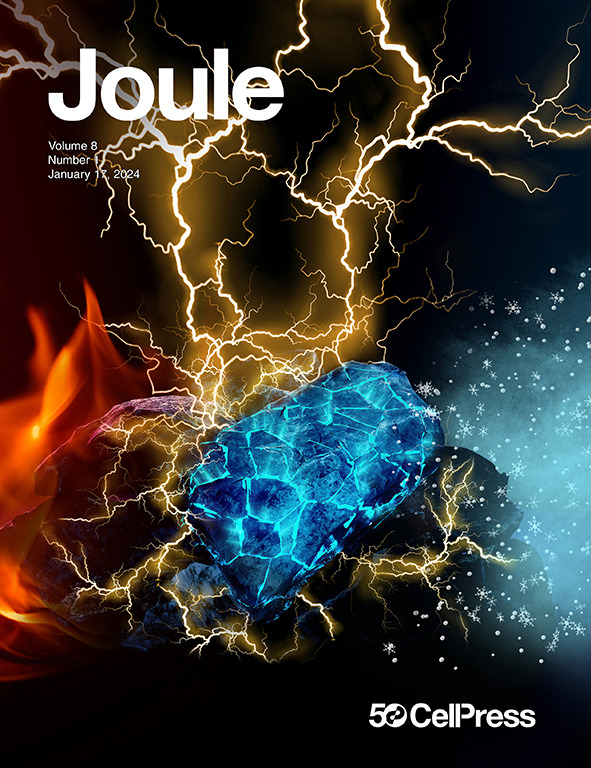T ≤ 583K 时η = 12% 的高性能 MgAgSb/Mg3(Sb,Bi)2-基热电材料
IF 38.6
1区 材料科学
Q1 CHEMISTRY, PHYSICAL
引用次数: 0
摘要
α-MgAgSb是一种很有前途的近室温热电(TE)材料,但由于空位和晶界的散射而导致载流子迁移率不足。合成具有大晶粒的化学计量α-MgAgSb一直是一项挑战。在这里,由于改进了球磨工艺,α-MgAgSb 粉末前驱体的相纯度在机械化学合成过程中得到了有效提高。经过随后的火花等离子烧结(SPS)和 583 K 的后退火处理,获得了接近全等的α-MgAgSb,呈现出马赛克结构,在 300-573 K 条件下,μ 值显著提高到 93.3 cm2V-1s-1,zTavg 达到 1.4。基于α-MgAgSb/Mg3BiSb 的 7 对 TE 模块被制造出来,在 Th ≤ 583 K 时效率达到创纪录的 12%,在 300 K 时的冷却 ΔTmax 为 61 K。本文章由计算机程序翻译,如有差异,请以英文原文为准。


High-performance MgAgSb/Mg3(Sb,Bi)2-based thermoelectrics with η = 12% at T ≤ 583K
α-MgAgSb, as a promising near-room-temperature thermoelectric (TE) material, has suffered from incompetent carrier mobility induced by the scattering of vacancies and grain boundaries. Synthesis of stoichiometric α-MgAgSb with large crystal grains has been challenging. Here, owing to an improved ball-milling process, the phase purity of α-MgAgSb powder precursor was effectively increased during mechanochemical synthesis. After subsequent spark plasma sintering (SPS) and post annealing at 583 K, near-stoichiometric α-MgAgSb exhibiting a mosaic structure was obtained, registering a significantly enhanced μ of 93.3 cm2V−1s−1 and zTavg of 1.4 in 300–573 K. A 7-pair TE module based on α-MgAgSb/Mg3BiSb was fabricated, which demonstrated a record-high efficiency of 12% at Th ≤ 583 K and a cooling ΔTmax of 61 K at 300 K. This work lays the foundation for broad applications of Mg-based TEs.
求助全文
通过发布文献求助,成功后即可免费获取论文全文。
去求助
来源期刊

Joule
Energy-General Energy
CiteScore
53.10
自引率
2.00%
发文量
198
期刊介绍:
Joule is a sister journal to Cell that focuses on research, analysis, and ideas related to sustainable energy. It aims to address the global challenge of the need for more sustainable energy solutions. Joule is a forward-looking journal that bridges disciplines and scales of energy research. It connects researchers and analysts working on scientific, technical, economic, policy, and social challenges related to sustainable energy. The journal covers a wide range of energy research, from fundamental laboratory studies on energy conversion and storage to global-level analysis. Joule aims to highlight and amplify the implications, challenges, and opportunities of novel energy research for different groups in the field.
 求助内容:
求助内容: 应助结果提醒方式:
应助结果提醒方式:


